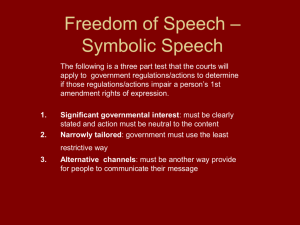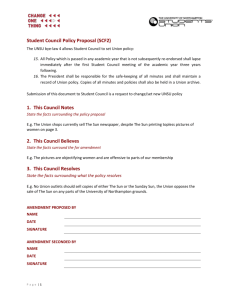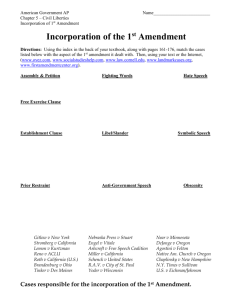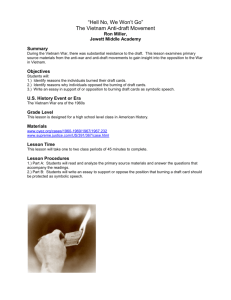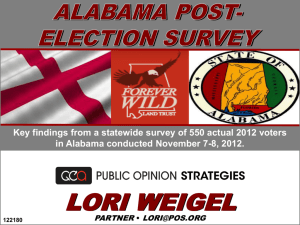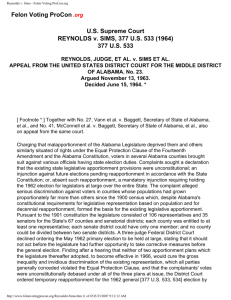ANSWER KEY to What is Symbolic Speech?: 1) Thornhill v
advertisement
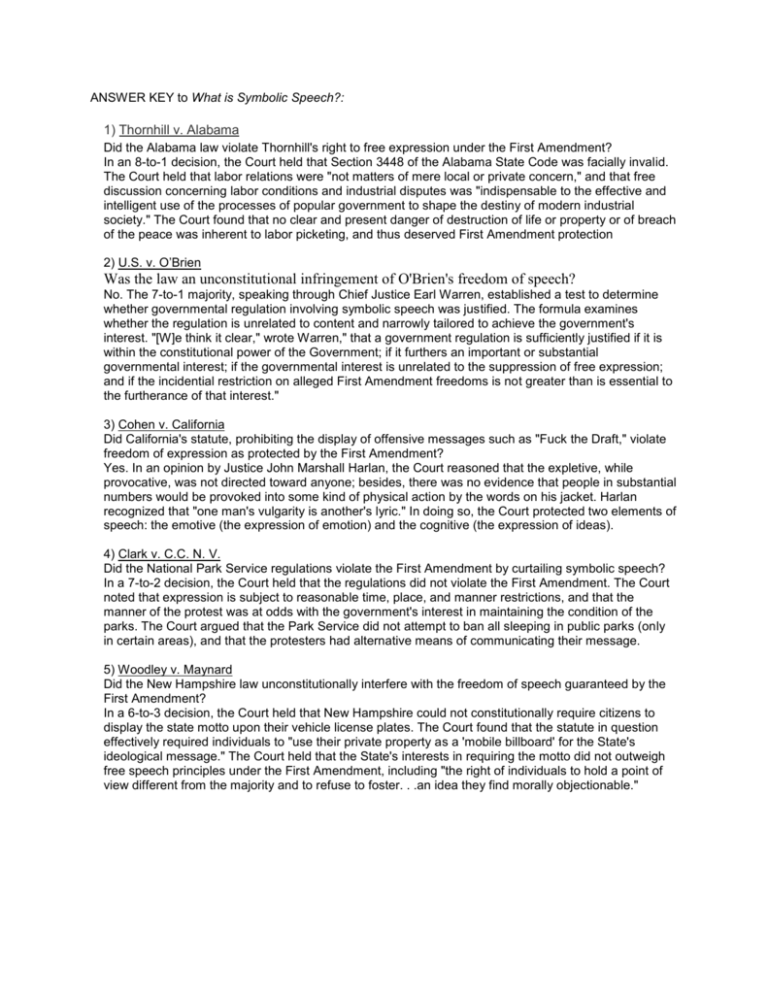
ANSWER KEY to What is Symbolic Speech?: 1) Thornhill v. Alabama Did the Alabama law violate Thornhill's right to free expression under the First Amendment? In an 8-to-1 decision, the Court held that Section 3448 of the Alabama State Code was facially invalid. The Court held that labor relations were "not matters of mere local or private concern," and that free discussion concerning labor conditions and industrial disputes was "indispensable to the effective and intelligent use of the processes of popular government to shape the destiny of modern industrial society." The Court found that no clear and present danger of destruction of life or property or of breach of the peace was inherent to labor picketing, and thus deserved First Amendment protection 2) U.S. v. O’Brien Was the law an unconstitutional infringement of O'Brien's freedom of speech? No. The 7-to-1 majority, speaking through Chief Justice Earl Warren, established a test to determine whether governmental regulation involving symbolic speech was justified. The formula examines whether the regulation is unrelated to content and narrowly tailored to achieve the government's interest. "[W]e think it clear," wrote Warren," that a government regulation is sufficiently justified if it is within the constitutional power of the Government; if it furthers an important or substantial governmental interest; if the governmental interest is unrelated to the suppression of free expression; and if the incidential restriction on alleged First Amendment freedoms is not greater than is essential to the furtherance of that interest." 3) Cohen v. California Did California's statute, prohibiting the display of offensive messages such as "Fuck the Draft," violate freedom of expression as protected by the First Amendment? Yes. In an opinion by Justice John Marshall Harlan, the Court reasoned that the expletive, while provocative, was not directed toward anyone; besides, there was no evidence that people in substantial numbers would be provoked into some kind of physical action by the words on his jacket. Harlan recognized that "one man's vulgarity is another's lyric." In doing so, the Court protected two elements of speech: the emotive (the expression of emotion) and the cognitive (the expression of ideas). 4) Clark v. C.C. N. V. Did the National Park Service regulations violate the First Amendment by curtailing symbolic speech? In a 7-to-2 decision, the Court held that the regulations did not violate the First Amendment. The Court noted that expression is subject to reasonable time, place, and manner restrictions, and that the manner of the protest was at odds with the government's interest in maintaining the condition of the parks. The Court argued that the Park Service did not attempt to ban all sleeping in public parks (only in certain areas), and that the protesters had alternative means of communicating their message. 5) Woodley v. Maynard Did the New Hampshire law unconstitutionally interfere with the freedom of speech guaranteed by the First Amendment? In a 6-to-3 decision, the Court held that New Hampshire could not constitutionally require citizens to display the state motto upon their vehicle license plates. The Court found that the statute in question effectively required individuals to "use their private property as a 'mobile billboard' for the State's ideological message." The Court held that the State's interests in requiring the motto did not outweigh free speech principles under the First Amendment, including "the right of individuals to hold a point of view different from the majority and to refuse to foster. . .an idea they find morally objectionable."
